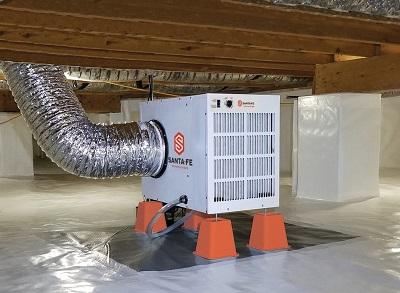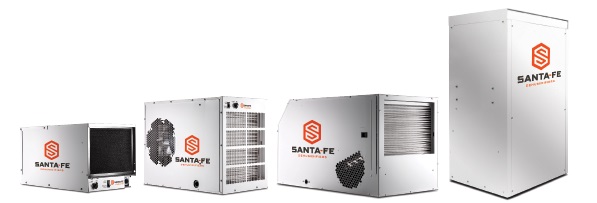
Placement
The dehumidifier should be installed in the central part of the space, to ensure uniform drying. If a central installation proves difficult, duct the unit to push supply air away from the dehumidifier (10-15 ft) to help promote better air circulation. Quick Tip, installation near an easily accessible location makes routine maintenance easier (such as an air filter replacement).
Proper Height
Position the unit a minimum of 6” off the ground. To achieve this height, use a hang kit or dehumidifier risers. If these accessories are unavailable to you, you can substitute wood blocks, bricks, etc. This proper height allows for proper drainage of the unit, resulting in better performance.
P-Trap
Dehumidifiers commonly use a negative air pressure drain pan. This causes air to flow backwards thru the drain system which can cause water to pool inside the dehumidifier and leak. A drain trap prevents this issue by trapping water in the pipe to stop air from flowing backwards. To avoid a backpressure situation, simply create a p-trap by tying a loop in the provided clear drain tube, so condensate does not overflow the drain pan and leak out of the corners of the dehumidifier. Quick Tip, keeping 11” zip tie’s handy makes this job quick and easy.
Proper Level
A level unit means water with properly flow out of the unit. Use a level to ensure proper installation. Quick Tip, If you do not have a level, make sure the dehumidifier is tilted slightly toward the drain line. This will help the flow of water, but a P-Trap is still required.

For more information on Santa Fe Dehumidifiers, visit www.Santa-Fe-Products.com.

